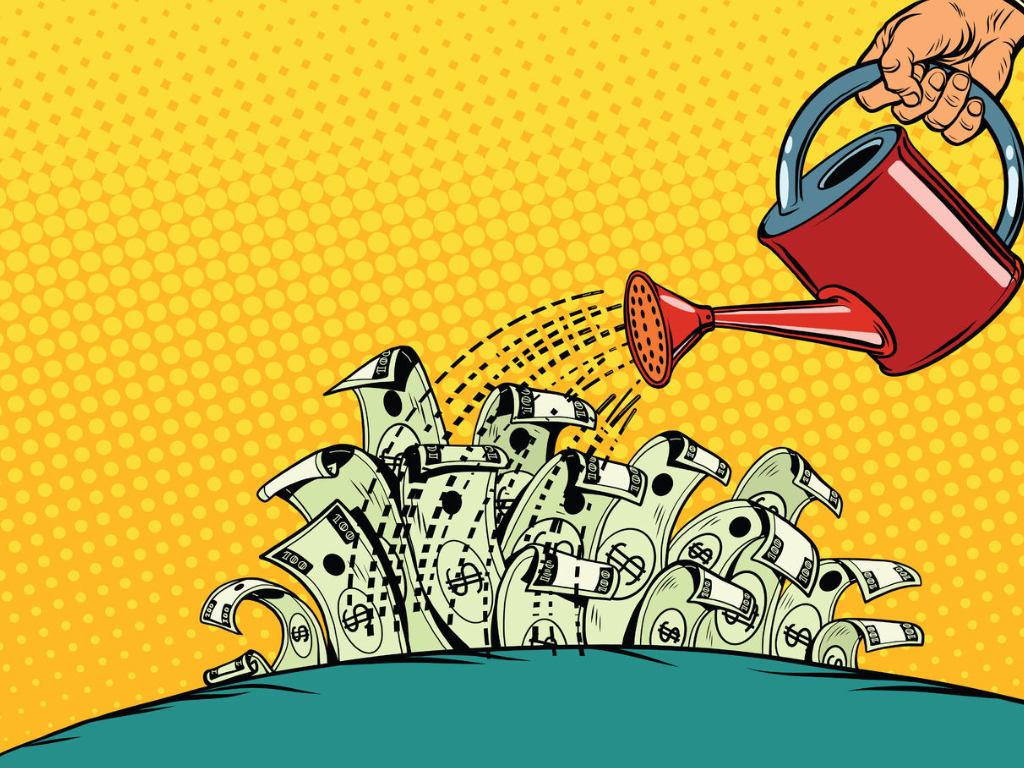People easily accept the idea that for-profit organizations can – and should – invest to make more revenue. That’s how businesses work.
Unfortunately, people often struggle with applying that same logic to nonprofit organizations. There’s a widespread belief that nonprofits should spend as little as possible and hope for the best!
That’s a recipe for mediocrity at best. And, more likely, failure.
The truth is, “it takes money to make money” – whether you’re a for-profit or a nonprofit. And one of the best ways fundraisers can boost revenue is to intelligently increase their spending on their mid-value donors.
To show you what I mean, let me tell you about a test I did a few years ago. We wanted to see just how effective an enhanced direct mail pack would be for an audience of mid-value donors, compared to a standard direct mail pack sent to the other half of the same audience:
The results:
The enhanced pack cost $70,187, or $1.98 each. The standard pack was $35,530. Just a dollar each.
Yikes! The enhanced pack cost twice as much! Surely we had a big problem on our hands!
Not when you look at the rest of the numbers…
Standard Pack Enhanced Pack
Cost: $35,530 $70,187
Cost per pack: $1.00 $1.98
Response rate 20% 28%
Average donation: $47.61 $65.63
Income: $336,919 $657,043
Net income: $301,530 $586,855
ROI: 9.48 9.36
The “nonprofits shouldn’t spend” crowd might point out that, in addition to the much higher cost, the return on invest of the enhanced pack was (slightly) lower. But no intelligent person would overlook the $285,325 more net revenue the enhanced pack brought in.
That’s a lot of extra money they got to spend accomplishing their mission. On top of that, the enhanced pack got 40% more responses. Each of those responses (which also came in at an average 38% higher donation) is a donor more engaged, more connected, more likely to continue to give.
This was a huge win.
And it’s normal. The kind of thing you can expect when you spend more to get more in your fundraising. Better yet, it’s something you can easily do to raise more money and build relationships with your donors.
Here are some of the ways you can put the investment mindset to work in direct mail for your top donors.
Hyper-personalisation
Speaking directly to donors about things you know matter to them is incredibly powerful. That’s the basic premise behind major donor fundraising, where you can literally build fundraising propositions that fit one specific donor’s dreams and interests.
With mid-value donors, you can’t quite go that far, but you could be using data in an enhanced way to collect information from donors – and use the information in your fundraising.
Here’s an example: Say you ran a survey that had questions about why people support you or what you do that matters most to them. (You should be doing surveys like this!) Suppose the “why I support” question had several choices, and one of them was “It’s important to me to help people in a way that helps them permanently overcome the challenges they face.”
To everyone who chose that answer, in your next appeal, you could have a paragraph like this:
I know you care about this project, because in the survey you filled out last spring, you told us that it’s important to you to help people in a way that helps them permanently overcome the challenges they face.
When you say back to them something they’ve said to you – even if it’s only marginally connected to the topic at hand – donors pay a lot more attention!
Arresting outer envelope
The cost of envelopes is something we routinely work to keep low in direct mail. That’s not a good goal with your mid-value donors. Of all the elements of any direct mail pack, it’s the outer envelope that has the most influence on response. If it doesn’t get noticed, it won’t get opened – and that’s guaranteed no response.
Try envelopes of larger size, smaller size, colour, texture, and unusual stock. All of these things help make the envelope stand out in the mailbox.
Better yet, use postal service special delivery envelopes (like Priority Mail in the US) or other special envelopes from carriers like FedEx or UPS. These truly stand out! They cost a lot more than “normal” envelopes, but with your best donors, it’s a great investment.
Long letter
Long letters almost always work better than shorter letters. That’s true across the board. But with your top donors, you can afford to really run with this principle. You can afford to send a truly long letter: 8, 10, 12 pages long!
Don’t be swayed by the idea that these people are even busier than others, so they have less time to read. That seems logical, and it may even be true. But a very long letter (assuming it’s well written, donor-focused, and follows direct-response rules) will do very well!
Big reply device
There’s absolutely nothing magic about coupon-style reply devices. The only thing good about them is they are inexpensive to produce. With mid-value donors, penny-pinching is not a good tactic. Use a full-page reply device! It will perform better, and you can afford it.
Lifts
Lifts are anything you add to a direct mail pack other than the must-haves: the letter, reply device, and return envelope.
It may surprise you to know that when it comes to lifts in direct mail, the more the better. I’ve sent packs with as many as 10 lifts. It really works.
Here are the types of lifts you can consider adding to a mid-value pack:
- Additional letters or notes. Anything from a post-it to a full letter. Usually from someone other than the signer of the main letter that endorses the situation and the need for the donor.
- Internal communications. Share things people in your org are saying about the project or people you’re raising funds for. Printed-out emails, internal reports, budget spreadsheets, etc.
- “Souvenirs.” Things from the real world that dramatize the need or make it more immediate. These things can be in a foreign language if that’s appropriate.
- Maps. Maps of anything, from a region or country to a very local place like a neighbourhood or community. Floorplans, cross-sections, and other things also have the pull-power of maps.
- Bounce-backs. Things that the donor can return with their donation that puts them in touch with what their gift does. Like Get Well or Encouragement cards, or ornaments that will be displayed for people to see.
Live stamps on return envelope
This is the easiest, most impactful way to spend more to get more. Live first-class stamps that make the envelope mailable (60¢ in the US right now). Ideally, it’s stamps of several denominations that add up to that amount. It’s a guaranteed response booster. For donors below around $100, the cost doesn’t justify itself, but for people above that level, it is well worth it.
This material is excerpted from the Moceanic online course, “Mid-Value and Major Donor Resource Hub,” available only to members of The Fundraisingology Lab.
Looking for fundraising advice you can take to the bank? Join The Fundraisingology Lab by Moceanic. You’ll get the tools, the information, and the supporting community that will take you to new places in your fundraising career. Join the waiting list now and you’ll be the first to hear when the doors open again!
Related Blog Posts:










